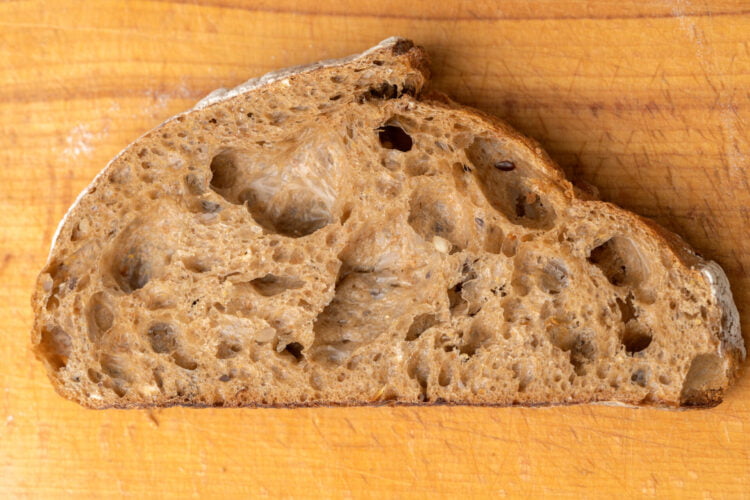Sourdough bread may have a lower glycemic index than other types of bread, which means it may affect blood sugar levels differently. The glycemic index is a mefasure of how quickly a food raises blood sugar levels.
Sourdough bread is made using a sourdough starter, which is a mixture of flour and water that has been fermented by naturally occurring bacteria and yeasts. During the fermentation process, these microorganisms break down the carbohydrates in the flour into simple sugars, which are more slowly absorbed by the body.f
As a result, sourdough bread may cause a slower and more gradual rise in blood sugar levels compared to other breads made with baker’s yeast.
However, it’s worth noting that the glycemic index of sourdough bread can vary depending on a variety of factors:
- Type of flour used
- Fermentation time
- Other ingredients added to the dough
Additionally, everyone’s response to carbohydrates can differ, so it’s important to monitor your blood sugar levels and speak with a healthcare provider about what types of bread are best for you.
What is the glycemic index of sourdough?
We already know that glycemic index could be affected by variety of factors. However, in general, sourdough bread made with all-purpose flour tends to have a lower GI compared to other types of bread made with the same flour.
The GI of sourdough bread made with all-purpose flour has been reported to range from around 53 to 68, according to some studies. However, it’s important to note that the GI values reported in different studies may vary depending on the methodology used to measure them. Additionally, the GI of a specific sourdough bread can vary depending on the specific recipe and fermentation conditions used.
Overall, while sourdough bread made with all-purpose flour tends to have a lower GI than other types of bread made with the same flour, it’s still important to monitor your blood sugar levels and speak with a healthcare provider about what types of bread are best for you.
Does longer fermentation help lower glycemic index?
Fermentation in sourdough is the process by which naturally occurring microorganisms, including wild yeast and lactic acid bacteria, break down the carbohydrates in the dough and produce byproducts such as carbon dioxide gas, acetic acid, and lactic acid. This fermentation process is what gives sourdough bread its characteristic tangy flavor and unique texture.
The longer the dough ferments, the more time the bacteria and yeast have to break down the carbohydrates and produce acids, leading to a lower glycemic index.
This slower digestion and absorption of carbohydrates can help to prevent spikes in blood sugar levels, making sourdough bread a better option for people looking to manage their blood sugar levels.
It’s important to note that the glycemic index of sourdough bread can still vary depending on the type of flour used and how the bread is prepared. However, the fermentation process can help to lower the glycemic index and make sourdough bread a healthier option compared to other types of bread.
In general, sourdough bread that has been fermented for a longer period of time, such as 12-24 hours or more, is likely to have a lower glycemic index than sourdough bread that has been fermented for a shorter period of time.
However, it’s worth noting that longer fermentation times can also affect the flavor and texture of the bread, so the optimal fermentation time may depend on personal preference.

Information and statements regarding health claims on this blog have not been evaluated by the Food and Drug Administration and are not intended to diagnose, treat, cure, or prevent any disease.






